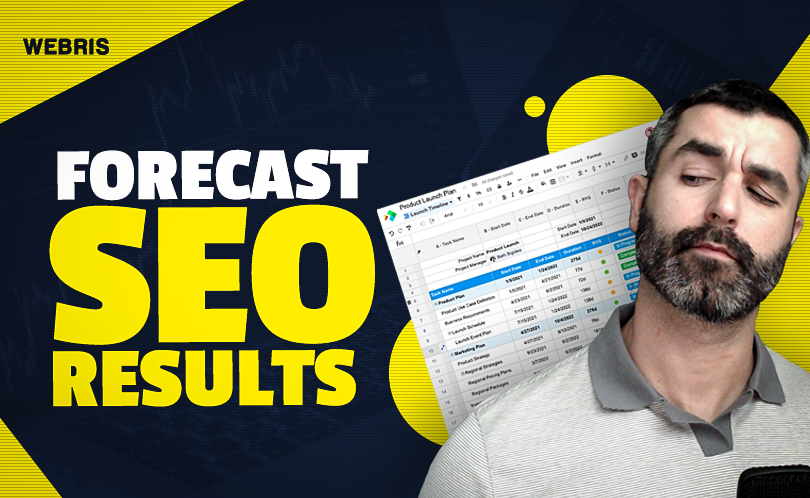
How to Accurately Predict Results from an SEO Campaign
Google’s organic algorithm is complex and unpredictable, making it difficult to accurately forecast SEO traffic.
However, it’s not impossible. Using data we can build estimates that are surprisingly accurate.
The WEBRIS team hacked together a tool that accurately predicts the results of an SEO campaign using 4 growth models.
It combines the power of Google Sheets + Google Data Studio to help you understand your website’s SEO potential from a campaign.
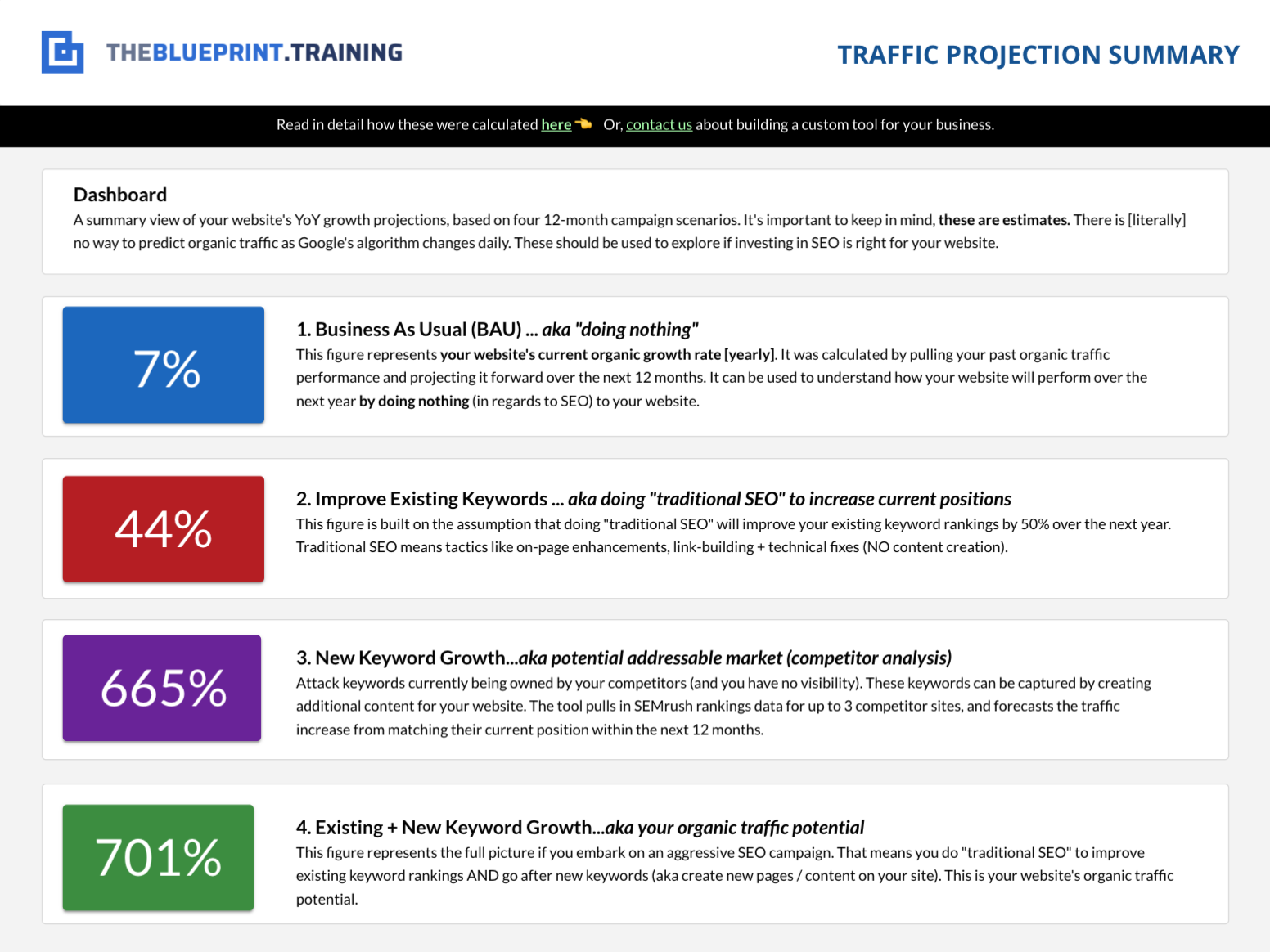
This tool has become a pivotal part of our agency’s service delivery process, helping us understand the impact of our efforts before engaging in a campaign.
In this post, I’m going to walk you through our SEO forecasting system that we use to predict the results of SEO campaigns.
Who is this for?
- Marketing teams. Looking at the viability of investing in SEO internally for your company.
- Business owners / founders. Looking to understand if SEO is worth the investment.
- SEO nerds (like us). Just for fun 😆
How we calculate organic traffic growth
We supercharged a Google Sheets file to be a data aggregator and analysis tool.
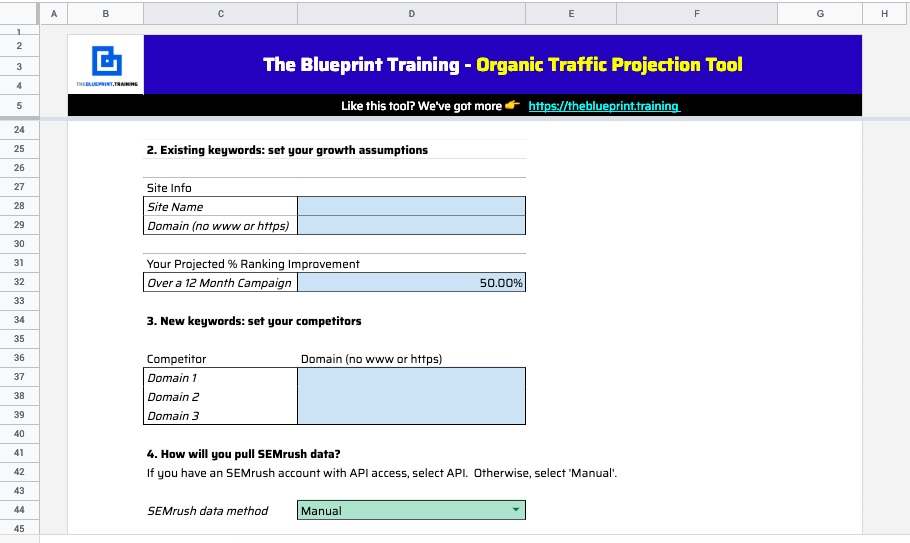
The Google Sheets file pulls in SEO data from 2 sources:
- Google Analytics – using SuperMetrics, the tool imports your last 12 months of organic traffic data. We can use this data to understand past performance and build “top down” forecasts.
- SEMrush – uses 3 of your SEO competitors keyword rankings to understand the “gaps” with your website. We can use this data to understand market cap and build “bottom up” forecasts.Note – we built the tool to pull from SEMrush API (if you have it) or using manual CSV exports.
After the tool runs a series of formulas, it syncs with a Google Data Studio template to visualize the data.
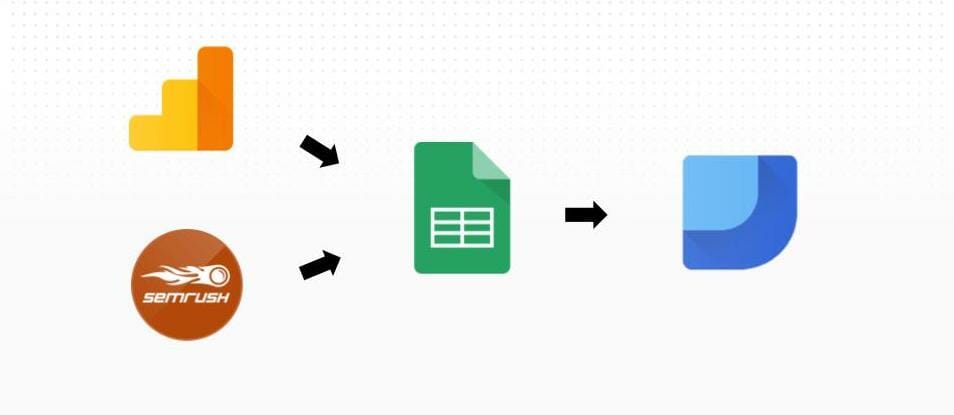
To project the organic traffic, we borrowed a few forecasting models from the finance world:
- Top down forecasting – takes a broad trend (like top line revenue growth) and builds a forward forecast based on that trend.
- Bottom-up forecasting (aka ‘sum of the parts’) – takes a look at the trend of each individual component, and then sum them up to forecast how the whole entity will move.
David goes into detail on the specifics of the forecasting models and how the Google Sheets file calculates them in the video below.
Breaking down the organic growth projections
We built 4 models based on different scenarios…
1. Business As Usual … aka “doing nothing”
This growth rate represents your website’s current organic growth pace [yearly], with no changes to your SEO strategy. It’s calculated by pulling your past organic traffic performance (Google Analytics) and projecting it forward over the next 12 months.
This growth rate can be used to understand how your website will perform over the next year by doing nothing (in regards to SEO) and whether or not you need to invest in SEO.
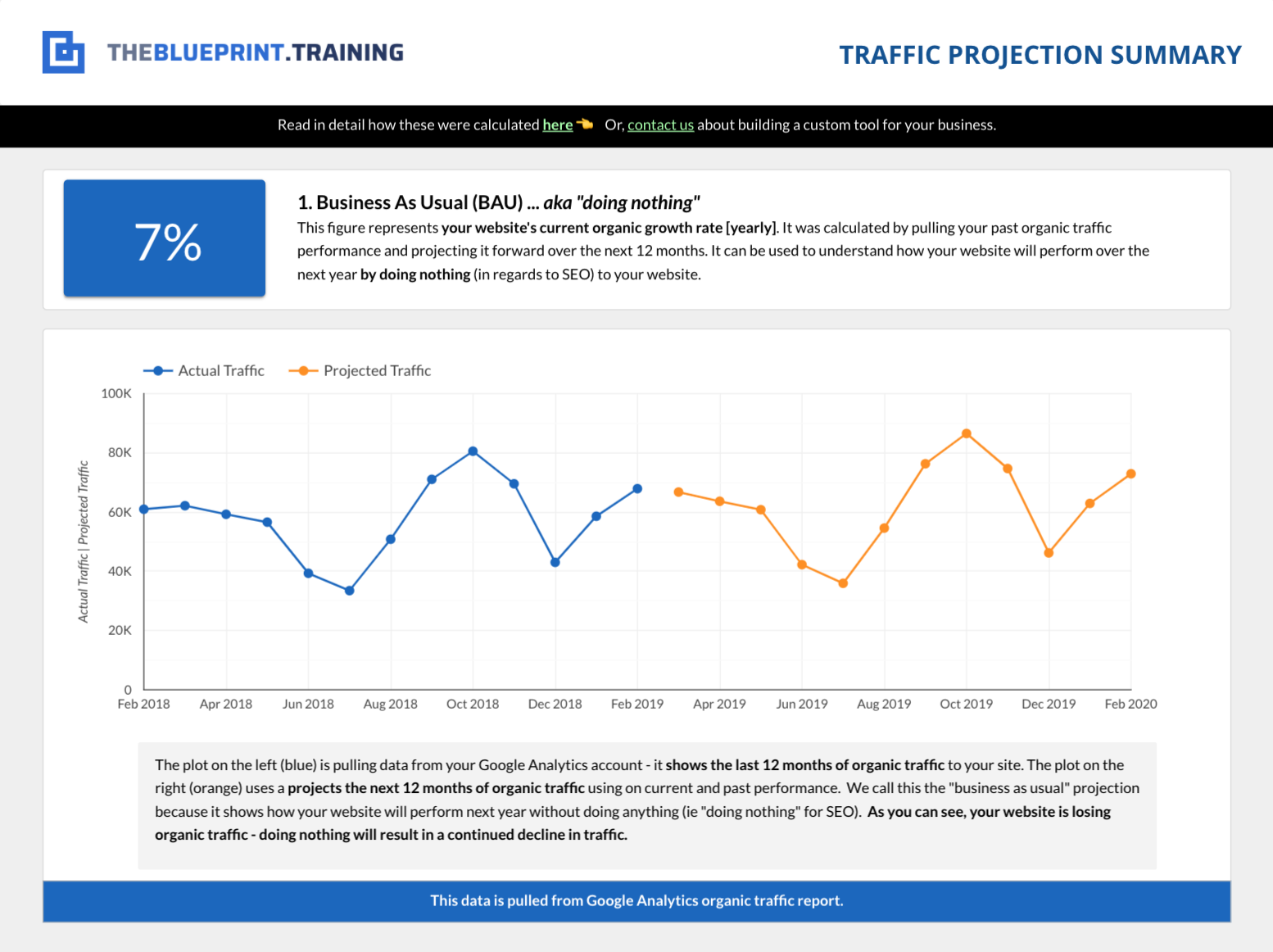
2. Improve Existing Keywords … aka doing “traditional SEO” to increase current positions
This figure is built on the assumption that doing “traditional SEO” will improve your existing keyword rankings by X% over the next year. Traditional SEO means tactics like on-page enhancements, link-building + technical fixes (NO content creation).
We built in the ability to input a growth assumption (x%), which should be based off your past experience performing SEO (i.e. your average growth rate from past campaigns).
This growth rate can be used to understand how an SEO campaign might impact organic traffic over the next year.
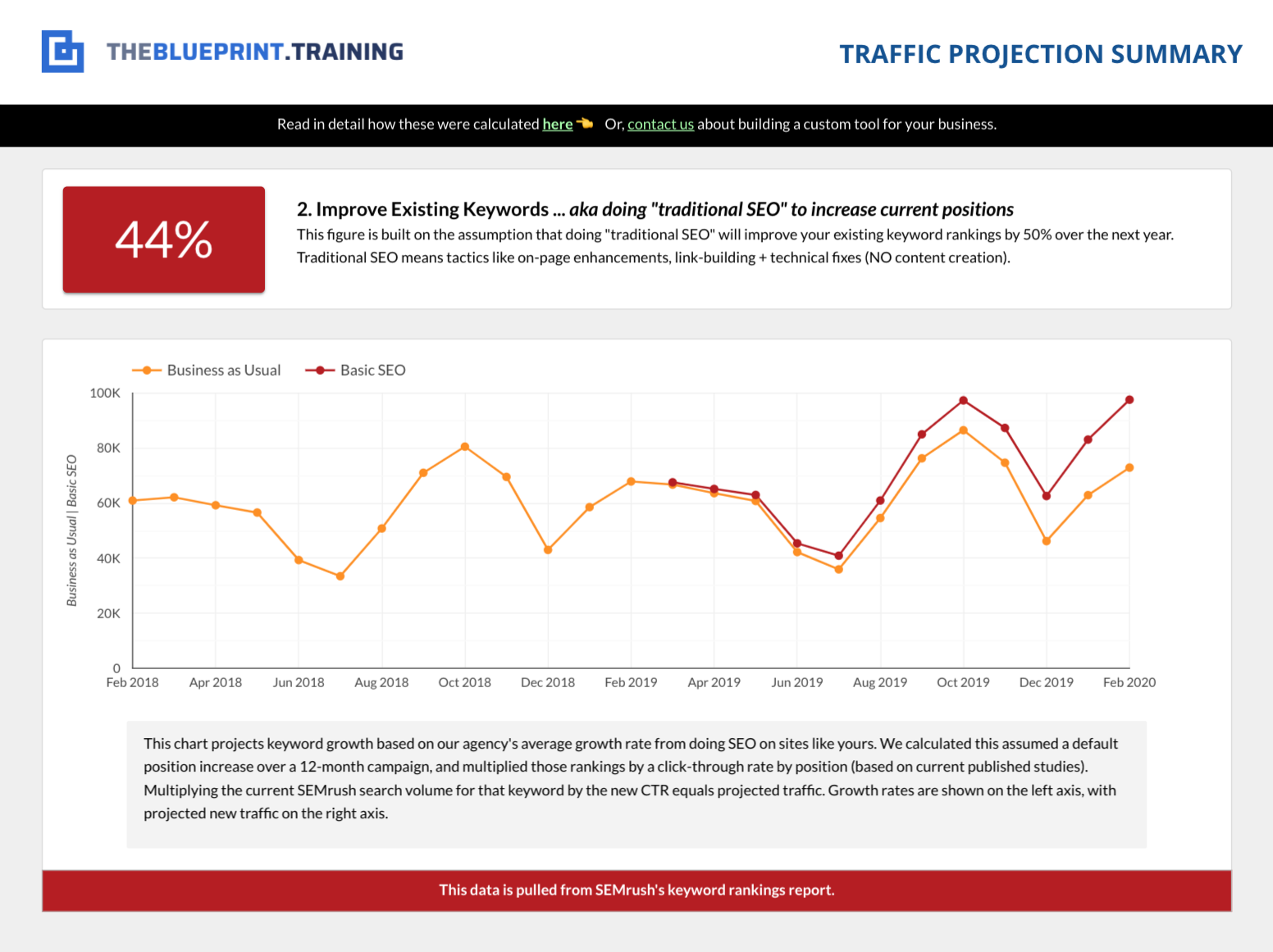
3. New Keyword Growth…aka potential addressable market (competitor analysis)
This growth rate is built using keywords currently owned by your competitors (where you have no visibility). These keywords could potentially be captured by creating additional content for your website around these keyword gaps. The tool pulls in SEMrush rankings data for up to 3 competitor sites, and forecasts the traffic increase from matching their current position within the next 12 months.
This growth rate can be used to understand the potential for your website’s growth.
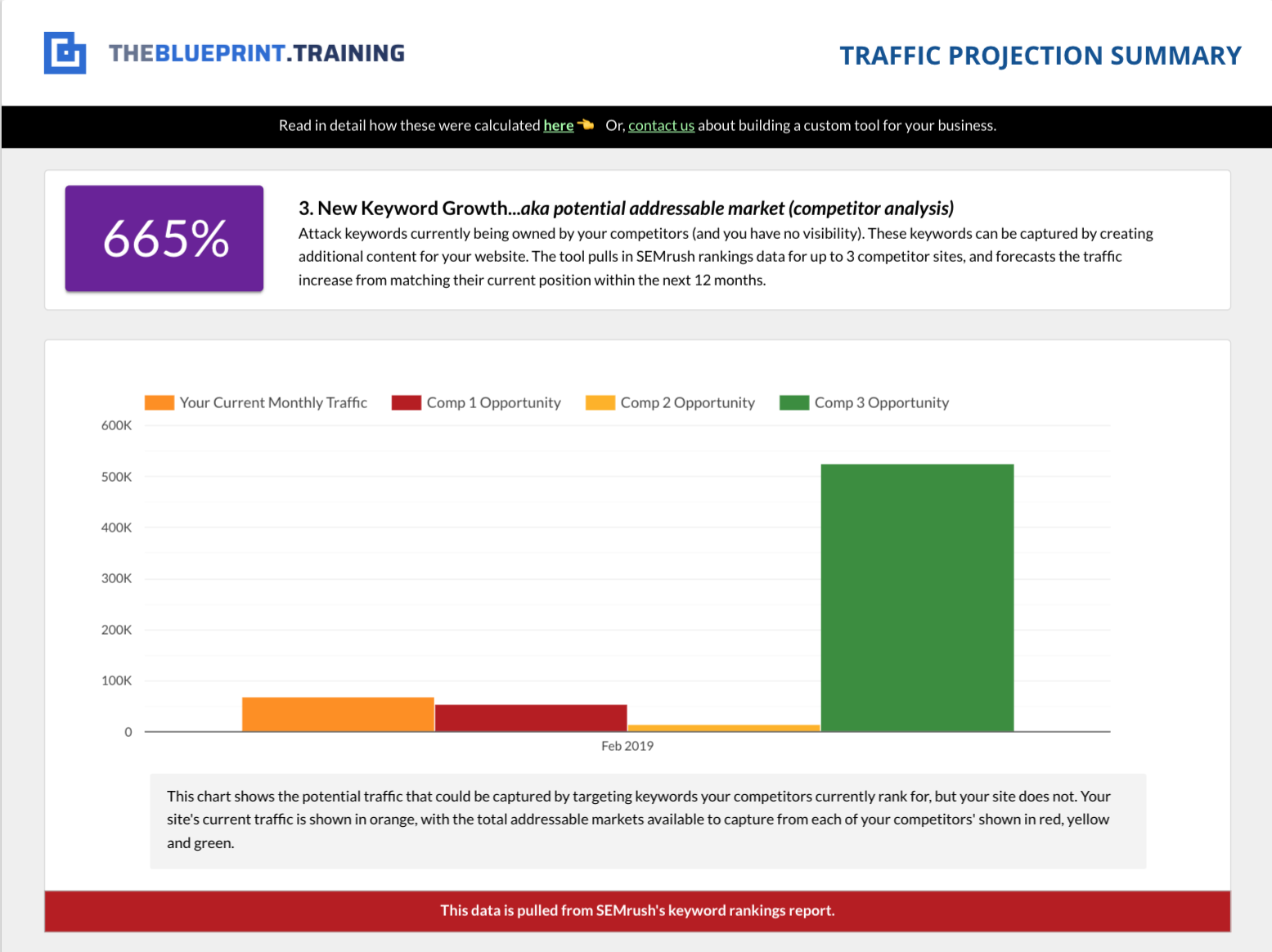
4. Existing + New Keyword Growth…aka your organic traffic potential
This figure represents the full picture if you embark on an aggressive SEO campaign. That means you do “traditional SEO” to improve existing keyword rankings AND go after new keywords (aka create new pages / content on your site). This is your website’s wholistic organic traffic potential.
This growth rate can be used to understand the FULL potential for your website’s growth.
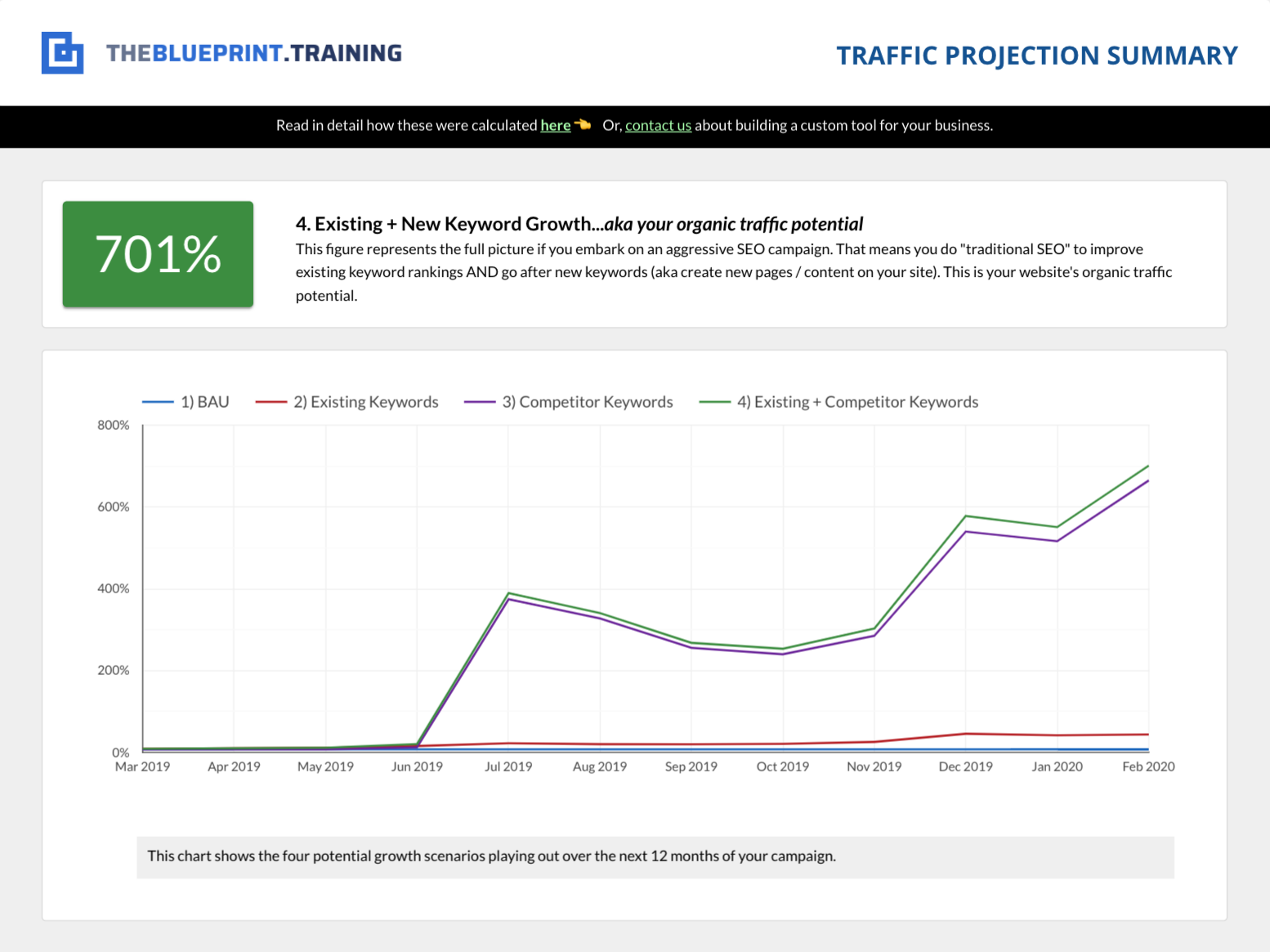
Traffic summary dashboard
A simple summary of all the growth projections, presented in 1 slide. The page automatically pulls through each growth rate from the individual page.

Next steps
The ability to project the results from an SEO campaign is an insanely valuable to your business.
Our team is standing by to run the Traffic Projection Analysis for you, FREE of charge.
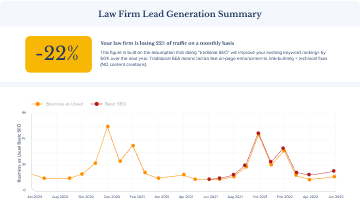
Your Website Is Losing Money!
Find out how many leads your website SHOULD be getting through our Traffic Projection Analysis.
FIND OUT MOREIs Your Website Costing You Clients?
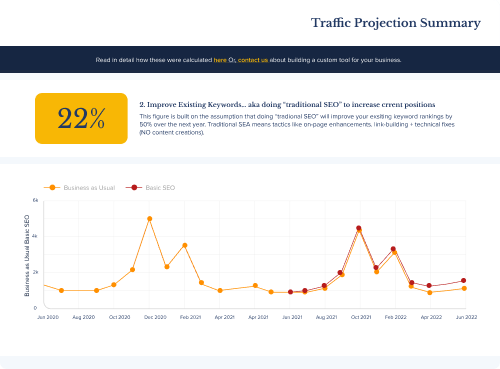
Is Your Website Costing You Clients?
Find out how many new cases your website SHOULD be getting through our Traffic Projection Analysis.
A data driven analysis that accurately forecasts how much traffic (and cases) your website should be getting from Google each month.
BOOK MY ANALYSIS